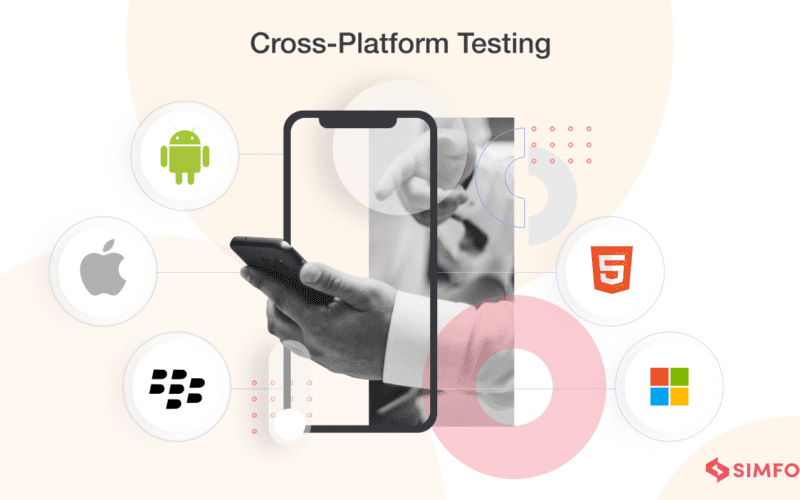When mobile banking was introduced just over a decade ago, many didn’t think it would last. We cherished our relationships with the teller, the cashier, the bank manager and even the security personnel.
Though initially reluctant, we’ve embraced mobile banking as part of our future. The advent of digital banking has eased our lives. With updated information at our fingertips, the freedom to do large and small transactions at the click of a button or purchase new bank products easily, we no longer need to visit the bank. However, banking software testing at regular intervals is required to keep mobile banking applications up and running like a well-oiled machine.
Given the complexity of banking and finance applications, the seriousness of their functions and the necessary security components, it is crucial that they are validated in the most stringent way to ensure 100% reliability.
Today’s article highlights a few best practices to help banks bring out the best in mobile applications.
Let’s get started:
Best practices for performing Quality assurance of Mobile Banking Applications
Effective mobile banking application testing can be a bit of a struggle when you don’t know where to start. If you are new to banking software testing, these measures can help:
- Outlining your objectives
Banking applications can be huge. Testers may find themselves perplexed about where to begin and how much to cover. They need to know how big of a net to cast in order to catch their fish. Outlining objectives based on the target audience’s needs and preferences, defining the scope of the application and prioritizing the key testable features will give them a fair idea of how the application testing will come to be.
This is a necessary first step to test the application in accordance with the key requirements and specifications of the intended audience, thus helping you plan ahead. A good practice is to conduct a persona mapping and invite the opinions of banking experts and business analysts to understand current banking pain points and build test cases based on the same.
- Highlighting the key features of the app
Will the app be majorly used for conducting transactions? Or for sending reminders of bill payments? Or will it be used to push new products to the customers?
Whatever the use case, it is important to identify, understand and test those features first that will be frequently used by the customers. Ultimately, this will help with a delightful customer experience and make the application more reliable in the long run.
A bank’s mobile application is expected to be robust and have various uses while being simple and valuable. Picking out key features to test can thus cut the testing time in half and allow for early releases.
- Building a test strategy based on the test requirements
After outlining the requirements derived from clients and industry standards, a test strategy must be set in motion. This test strategy can help garner feedback from key stakeholders. The test strategy also highlights specific requirements that you will be testing and how you must approach the actual tests.
The test strategy must cover these primary aspects:
Functionality – to test what works and what not
Automation – to reduce manual testing efforts
Load and stress- to measure the amount of load the application can handle under surge
Performance – to guarantee a satisfactory user experience
Security – to ensure the app is safe for conducting monetary transactions and protects confidential information
Compliance – to ensure it meets the industry standards and regulations
API integration – to validate whether the app functions properly with 3rd party apps and services
Mobile specific testing – to ensure the app runs well on all kinds of mobile devices
A trusted QA partner can help you cross all these hurdles and guide you in reviewing and implementing the test strategy.
- Introducing test automation
Automation for mobile banking? You may think of it as a risky proposition.
Think again!
When testing banking applications, automation not only helps increase testing efficiency and productivity but also cuts costs and speeds up the release time by 10-100X.
Timely automated performance testing of mobile banking applications has various benefits. For starters, it consistently improves the test coverage to detect more defects/errors while reducing the cost of failure. It also saves time because the tests are repeated. An early verification thus helps in increasing productivity.
- Testing on real devices
While developing an application, the app is generally tested on simulators or emulators that mimic a real device’s environment to a large extent. However, this may not be feasible for mobile banking applications that require crowd testing. Crowd testing ensures that the app under verification performs well for any given device, network, operating system, geographical location, or a combination of these.
Thus, it is a good practice of banking software testing to test apps on real smartphones or tablets to gauge how the app feels and performs on an actual device.
Conclusion:
Banking and financial markets view modern digitalization as this colossal challenge that limits them. On the contrary, they must utilize it as an opportunity to grow and evolve. It isn’t the development part that plagues most mobile banking developers as it is easy to program, code and execute new features. However, the necessary software testing that succeeds has to be carried out with utmost precaution, care and without any bias.
When aided by the right quality engineering provider, QA becomes a walk in the park. Apart from automated performance testing, QA teams can also look into the functionality, security and integrity aspects of the mobile banking application. As a result, QA is never an added cost but a necessary contrivance to prevent future headaches and safeguard reputations, thus cementing customer loyalty to the institution. Choosing the right partner to help you build quality banking products can make a significant difference.

